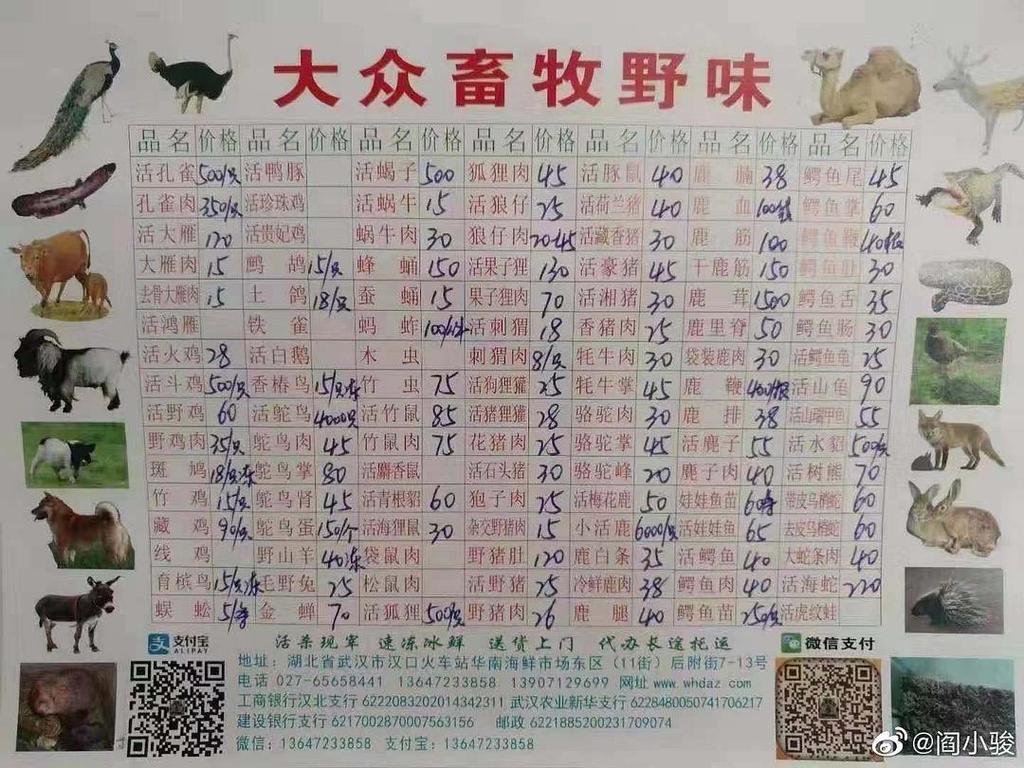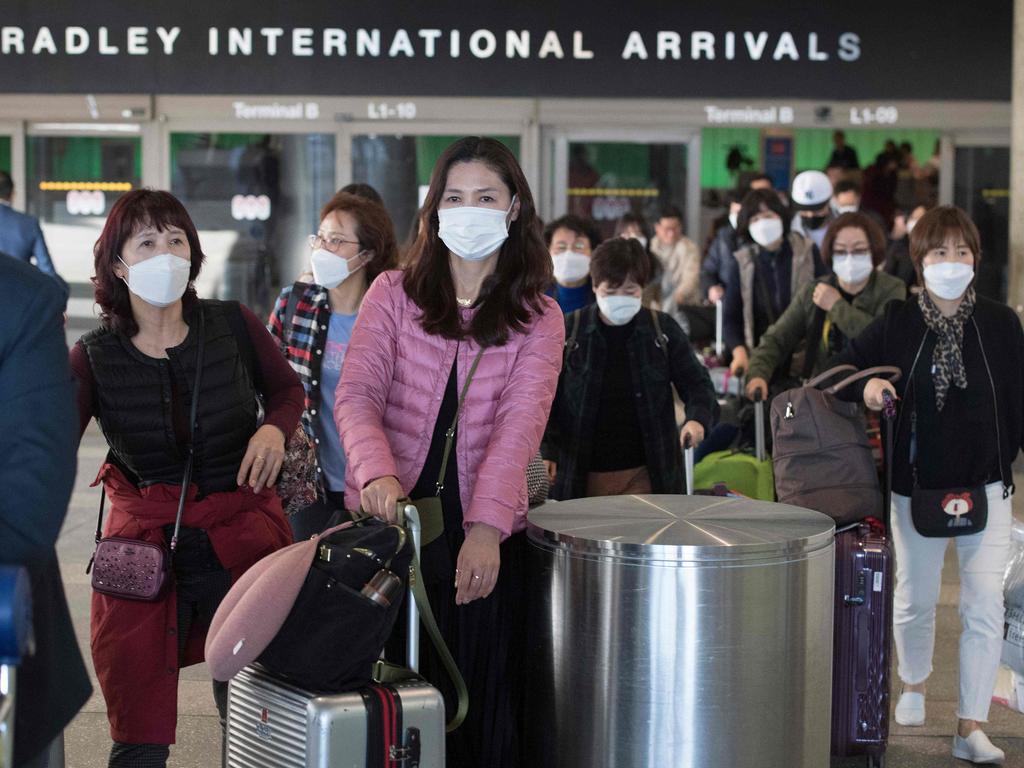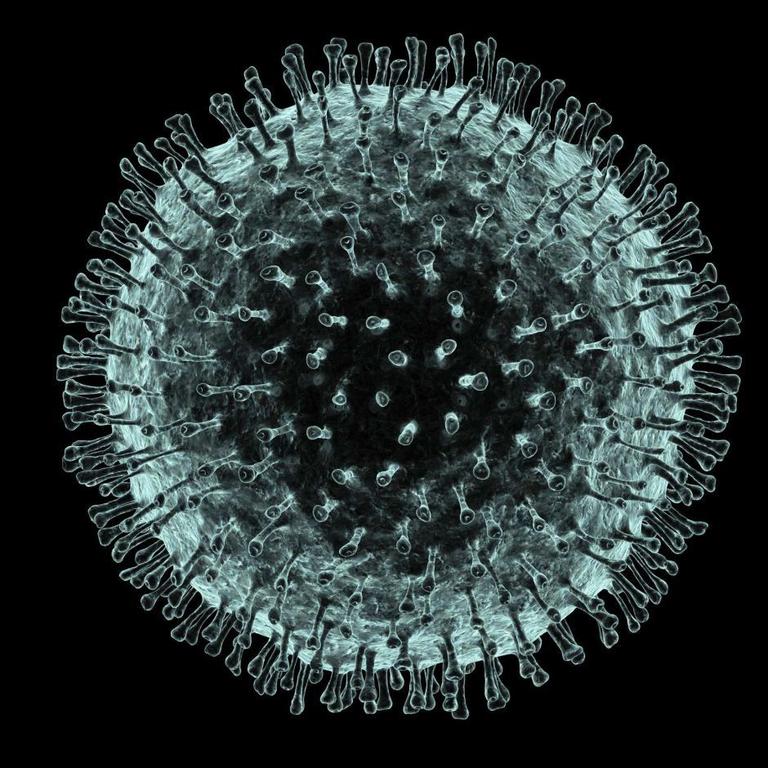Timeline shows how deadly coronavirus spread around the world
In two months the coronavirus went from one case in China to a deadly epidemic with more than 10,000 cases around the world.

The first known case of the deadly coronavirus emerged just two months ago. Since then more than 200 people have died from the virus, the number of confirmed cases has jumped to more than 10,000 and it has spread to numerous other countries.
The Chinese city of Wuhan has been named the epicentre of the outbreak and there has been a lockdown on travel in and out of the area.
Seven cases of the virus have been confirmed in Australia, with four detected in NSW, two in Victoria and one in Queensland.
Here is a timeline that shows exactly how the virus spread so quickly, with one case turning into thousands in a matter of weeks.
FIRST CASE, December 1, 2019
The first patient to be diagnosed with the new coronavirus started showing symptoms of the illness at the very beginning of December, according to a study published in the Lancet.
By December 8 several cases of the mystery illness had emerged and had been documented by health authorities in Wuhan in the Hubei province of China.
At this point most of the people showing symptoms has lived or worked around the local Huanan Seafood Wholesale Market, where vendors have been found to be illegally trading in live wild and exotic animals.
Wildlife sold at the Huanan “wet” market for human consumption included wolf cubs, civet cats, bats, dogs, pigs, snakes, chickens, donkeys, badgers, bamboo rats, hedgehogs and deer.
WORLD HEALTH ORGANISATION ALERTED, December 31
Chinese authorities alert the World Health Organisation (WHO) to multiple cases of pneumonia in the city, weeks after the first cases came to light.
Patients are quarantined and work begins on identifying the origin of the pneumonia.
SEAFOOD MARKET SHUT DOWN, January 1, 2020
The Huanan seafood market, where the virus is thought to have originated from, is shut down and placed under investigation.
As experts continue to work on identifying the virus the number of confirmed cases jumps to 40.
On January 5 Chinese authorities officially rule out the return of the Severe acute respiratory syndrome (SARS) virus, which also originated in China and killed more than 770 people worldwide in 2002 and 2003.
Two days later officials announce the outbreak involves a new virus, which they name 2019-nCoV.
The novel virus is reported to be from the coronavirus family, which and SARS and the common cold are both apart of.

FIRST DEATH, January 9
The death of a 61-year-old man in Wuhan who purchased goods from the market is linked to the coronavirus.
He died after being admitted to hospital with “severe pneumonia”.
The man’s death is not reported by Chinese media until January 11.
VIRUS SPREADS OVERSEAS, January 13
Two days after news of the death came to light, the first case of the virus is confirmed overseas in Thailand.
WHO identifies the woman as a tourist travelling from Wuhan to Thailand. She was identified by Thai officials upon her arrival and hospitalised with mild flu symptoms.
“The possibility of cases being identified in other countries was not unexpected, and reinforces why WHO calls for ongoing active monitoring and preparedness in other countries,” the organisation said in a statement.
Three days later on January 16 Japan reports its first case of the virus from a man who visited Wuhan.
SECOND DEATH, January 17
A 69-year-old man dies from the virus in Wuhan on January 17, making it the second recorded death.
Over the next few days the United States, Nepal, France, Australia, Malaysia, Singapore, South Korea, Vietnam and Taiwan all confirm cases of the virus.
The US announces it will start screening flights arriving from Wuhan.

THIRD DEATH, January 20
China reports a third death in Wuhan along with more than 200 confirmed cases of the disease.
Infections are also being reported outside the Hubei province including in Beijing, Shanghai and Shenzhen. A case of the virus is also detected in South Korea.
China’s National Health Commission confirms the virus has been passed through human-to-human transmission.
Asian countries introduce mandatory screenings at airports of arrivals from high-risk areas of China, as millions prepare to travel for the Lunar New Year.
China’s president Xi Jinping makes his first comments on the coronavirus, saying people’s lives must be given “top priority” and the virus needed to be contained.
US CONFIRMS FIRST CASE, January 21
The United States confirms its first case of the coronavirus in Everett, Washington, a man in his 30s who had returned to the area last week from Wuhan.
Taiwan also confirms its first case, a woman in her 50s.
By January 22 the number of deaths in China has jumped to 17, with more than 550 confirmed cases of the virus.
Cases of the virus appear in Hong Kong and Macau as North Korea puts a temporary ban on foreign tourists entering the country.
WUHAN PUT ON LOCKDOWN, January 23
The city of Wuhan is placed under quarantine, suspending air and rail departures from the area.
Public transport is also halted in at least 18 other cities in Hubei, affecting more than 50 million people.
This travel ban later extended to private cars.
Beijing announces it will be cancelling events for Lunar New Year which starts on January 25.
The first death outside Hubei is also reported, with an 80-year-old man dying from the virus in Hebei, just south of Beijing.
Approximately 580 cases of the virus have now been confirmed.
The WHO postpones the decision on whether to call the outbreak an international health emergency.
By January 24 the death toll has rises to 26 and more than 830 cases of the virus have been confirmed.
Shanghai Disneyland closes as does a section of the Great Wall and other landmarks. Hong Kong’s Disneyland follows.
France confirms its first three cases of the virus and a second case is identified in the US.
The number of cities under shutdown in Hubei rises to 13.

VIRUS EMERGES IN AUSTRALIA, January 25
Australia confirms its first case of the coronavirus in Melbourne, a man in his 50s who recently returned from Wuhan.
Cases of the virus are confirmed NSW, with three men aged in their 30s, 40s and 50s being treated at Westmead Hospital in Sydney.
The death toll rises to 41, with more than 1300 people infected.
Hong Kong declares a state of emergency and cancels all official visits to China.
Malaysia bans visitors from Wuhan as it records four official cases of the disease.
Canada also reports its first case of the virus, with the US identifying three more cases the following day on January 26.
FIFTH AUS CASE CONFIRMED, January 27
Another person tests positive to the virus in NSW, bringing the total number of confirmed cases in Australia to five.
The 21-year-old woman arrived at Sydney Airport from Wuhan before Beijing banned all outbound travel.
The death toll stands at 81 and the global number of confirmed cases has risen to more than 2750.
New cases are confirmed in the US, Taiwan, Thailand, Japan and South Korea.
On January 28, China reports 25 more deaths from the virus, bringing the toll to 106.
The total number of confirmed cases climbs to more than 4500, with almost 7000 suspected cases.
Germany announces what appears to be the first confirmed instance of human-to-human transmission in Europe.
Japan reports a case of a man apparently infected after driving tourists who had come from Wuhan.
Hong Kong-based Cathay Pacific cuts flights to and from the Chinese mainland.
WUHAN EVACUATION PLAN, January 29
Scott Morrison announces a plan for the Australians trapped in Wuhan to be evacuated to Christmas Island where they will be quarantined for at least 14 days.
More than 600 Australian citizens in Wuhan have registered for advice or assistance.
Japan and the US also evacuate hundreds of citizens from the city on chartered flights.
France and Germany also make plans to evacuate citizens.
The United Arab Emirates reports the first known case in the Middle East.
British Airways and Lufthansa suspend their China flights, as do airlines from Indonesia, Myanmar, Nepal and Russia.
Kazakhstan and Russia shut their borders with China.
A second case of the virus is confirmed in Victoria, hours before the first case is confirmed in Queensland, bringing the total number of cases to seven.
HUGE DEATH TOLL JUMP, January 30
China announces 38 more deaths, making it the biggest single day death toll jump so far and bringing the total to 170. More than 8000 have been infected.
Two more cases are confirmed in Australia, one in Victoria and one in Queensland. This brings the total number of cases to nine.
A cruise ship carrying nearly 7,000 people is placed on lockdown in an Italian port over two suspected cases.
GLOBAL HEALTH EMERGENCY DECLARED, January 31
The WHO declares a global emergency over the coronavirus, with the death toll rising to 213.
The total number of infections has almost reached 10,000.
AUSTRALIAN LOCKDOWN, February 1
Mr Morrison announced unprecedented new control measures that will see all non-Australians travelling from mainland China barred entry at the border in an attempt to stop the spread of coronavirus.
The tough new measures from the government come as the number of Australians confirmed to have contracted the virus rose to 12.
All Australians arriving from China will be told to self isolate for 14 days but anyone that is not a citizen or permanent resident will be barred entry.
Qantas also announced that it would suspend services to mainland China starting from February 9.
DEATH TOLL RISES, February 2
China confirmed the death of another 45 people bringing the total death toll to 304.
The number of confirmed cases in China has risen to 14,3000 nationwide, surpassing the number of the 2002-03 Sever Acute Respiratory Syndrome (SARS) outbreak.
A man also passed away in the Philippines in what is believed to be the first death outside of China from the virus.
Australia has a confirmed 12 cases but three have already been discharged from hospital as they were cleared.




